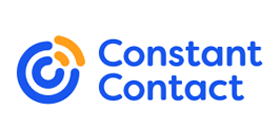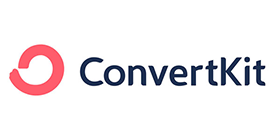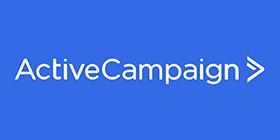There are so many features that iContact offers to the users. It caters for the needs of virtually all users.
1. Message Builder
The iContact tool comes with a highly useful toolbar and drag & drop editing blocks that smoothly integrates with more than six hundred email templates that are part of each subscription. These templates are well-organized in a broad range of categories such as technology, non-profit, children, and travel. iContact also offers the basic templates with no theme that offer a simple layout that users can follow.
2. Message Coder
The feature provides those users who are proficient in HTML the ability to personalize their email messages by using tables, message previews, design views.
3. Email Delivery
The platform employs so many measures to make sure that the email users reach inboxes together with a dedicated email delivery team that monitor the servers of the company to be able to optimize the send rates. You will also be able to get an inbuilt spam checker.
4. Segmentation
iContact offers email segmentation and this feature is rapidly becoming the normal practice in the world of email marketing. You basically create different versions of your messages and then tailor each of them to different demographic groups in your target audience. This is accomplished through a process that we can define as black magic. The iContact tool will work out exactly the version that all subscribers will appreciate. It is so handy as long as you handle everything effectively.
5. Signup Forms
As an iContact user, you can customize your iContact signup template forms and include the option of adding the forms to your Facebook pages or websites.
6. Autoresponders and Workflow Automation
Every iContact subscription comes with the autoresponder service. Therefore, as a user, you can set up your email marketing program to send automatic messages to users based on the actions of those users. These messages can include things like coupons, welcome messages and many more. The other feature that you will get access to is workflow automation. These tools help users to target and time email campaigns to individual contacts. It also has the much-needed reporting features like engagement tracking and social media monitoring. Therefore, you will never go wrong when you choose iContact as your email marketing tool.
7. Integrations and Add-Ons
As a customer, Vocus strives to give you everything that you need in terms of digital marketing. The integrated PR and marketing offerings from the company strive to achieve this objective. To add on this, there are approximately integrations and add-ons for the basic subscription to iContact.
Some of the integrations include iContact for salesforce, eCommerce, and Drupal. We also have the social media integrations that comprise email to social media., Facebook, Twitter, and LinkedIn. All these works to make sure that you have the best experience when dealing with iContact. iContact sync is one of the properties that make this platform to work seamlessly.
8. Security
iContact rates as good when it comes to the security that the company has put in place. iContact uses a firewall and 128-bit SSL encryption to protect the data of its customers. It stores this data in multiple servers for complete redundancy and backs it up on a real-time basis.
The privacy policy of the company meets the standards of TRUST. However, the company can use your own email or telephone (not the ones in your list) to get to you for promotional and marketing purposes. It can also give your info to its affiliate companies to contact you for the purposes of marketing or promotion. However, it is possible to opt-out of such individual mails through the customer reps. However, there is no single method for opting out of the promotional communication in a single go.
The other great inclusion in this tool is the anti-spam policy and protection. iContact has one of the stickiest anti-spam policies in the market. Even if you are registering for a free trial on iContact, you have to agree to the End User Service Agreement of the company that has the Anti-Spam policy. As a user, you have to certify that the emails that you enter into iContact are permission-based or opt-in. You also have to agree to the way the company defines spam.
iContact monitors huge list imports and utilizes an MD5 hash record in screening the email content for common spam trends and wording. iContact also maintains archives for all the unique messages that are sent via iContact servers and require customer acknowledgement before sending every email. You have to certify that the customers have granted you permission to send the email to them. The company staff always reviews all the messages that are sent out to a recipient list of more than 5000 individuals. The same case applies to a list of 500 individuals within the first two months of using iContact. It explains why the brand is on the leading end especially when it comes to iContact careers.
9. Campaign Creation
When starting an email campaign in iContact, you have to choose between two designers: MessageCoder and MessageBuilder. The MessageBuilder is a WYSIWYG editor while the message coder allows the use of HTML to code your message. The MessageBuilder has a selection of about 700 templates and hence you will not fail to get a template that you require. You can introduce a few modifications depending on your individual needs.
However, the editor itself can be a little bit disappointing. iContact has a rudimentary image editing that allows for word-wrapping, resizing, and little else. There is no way of simply copying page elements for the spacer, image block, or text block and no easy way of creating buttons. It has great options to text wrap text around your images. The platform has an easy to use editor even though it is limited and sometimes buggy.
After composing your message, it is possible to preview it on desktop, tablet, and mobile phone formats. One big iContact park is the integration with the most popular social media services like LinkedIn, Twitter, and Facebook. This allows for direct linking to your accounts from the iContact dashboard.
10. Sending Email
It is simple to enter contacts into your iContact account and there are three basic ways of doing this. You should complete a form that has info about every contact, upload an XLS or CSV file, or copy email addresses and paste in the text block. You have to certify that all the email contacts have granted you permission to email them.
When setting up your list, you will see the option of setting up autoresponder emails to any new subscribers who are joining your list. The other option in iContact is the double op-in which is an automatic message that confirms the subscription of every new subscriber to your newsletter. When you take this step, it will legitimize your list and reduce the possibility of account suspensions or spam complaints due to spam.
It is quite straightforward to send out an email through iContact. The platform gives users the opportunity of running their messages through the spam check that spans the message for potential red flags that may trigger spam filters. Once you are satisfied with this, you are free to select the list that you prefer to use.
You can also post the email to the linked social media networks immediately through a series of checkboxes. However, you have to confirm that you only have permission-based emails on your list. You can either schedule the message to send on a future time or date or send it immediately. It is the strengths that you get in almost all iContact reviews.
11. Reporting
This tool offers two important sets of statistics i.e. ‘List Health’ and ‘Account Health’ that display the general effectiveness of campaigns. It tells you how every element should look at a glance in your email marketing campaign. You will be able to view the number of sent messages, subscriber count, images used, overall bounces, unsubscribes, subscribers, and growth for a specific list.
It also presents key statistics for individual campaigns like bounces, clicks, and opens in both the pie chart and numerical formats. You will also view the individual email addresses that are associated with clicks and open. However, you will not be able to track your total number of opens. You will also view the activity that your messages have generated on the social media sites from on the main reports page.
![]()



